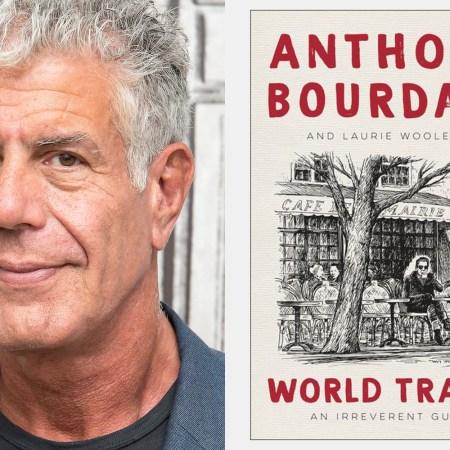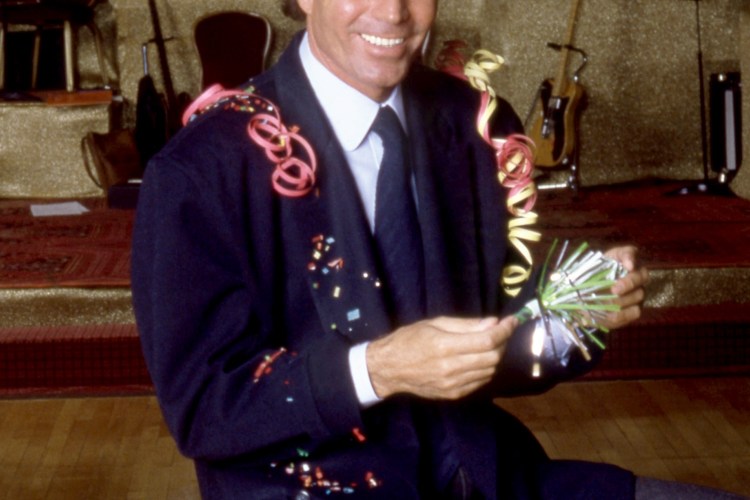Travel can take many forms — and not all of them involve physically leaving a certain place. That’s one of the ideas at the core of Shahnaz Habib’s thoughtful and thought-provoking new essay collection Airplane Mode: An Irreverent History of Travel. Throughout the book, Habib ponders the very meaning of travel, and whether you actually have to leave home in order to have a satisfactory journey somewhere.
That’s far from the only big idea to be found within the book, however. Habib also covers everything from the history of travel guidebooks to the challenges that can arise when traveling depending on the passport you’re using. It’s both a welcome addition to the existing library of literature on travel and a resonant critique of much of it — and it may well leave you thinking more about your own experiences making your way across the globe.
Habib spoke with InsideHook about her book’s origins, the history she recounts in its pages and the secret history of carousels.
InsideHook: Airplane Mode is written in chapters of varying sizes and subjects. Did the book grow out of essays you were writing about travel, or was there an overarching project in mind from the beginning?
Shahnaz Habib: No, there wasn’t. I originally conceived of it as a book of essays about not traveling because that’s what I seemed to be mostly doing. I had all these essays that eventually became the shell of the current chapters. So I had an essay about not going to Paris and an essay about my father who hates traveling. I realized that there were all these essays about not traveling, or about not being a very adventurous traveler.
I put them together, and my editor at that time said, “Well, this is great, but do you want to consider the history of travel and how it sort of intersects with your personal history for instance with passports and visas and —” Even before she finished the sentence I jumped at it because it’s such a great idea. I couldn’t believe I hadn’t already thought of it, so it was really just serendipitous that she thought of it. Then I started using the essays as I had them to think about larger issues.
You also work as a translator. In terms of the idea of traveling without physically traveling, do you feel like that work also plays into that?
I think translation is definitely a way to travel without traveling. And language itself is a kind of travel. So yeah, I feel like translation is there in almost every chapter without me specifically referring to it. I think the way I look at the world is the way a translator looks at the world.
Some of the details about the history of words and the history of different objects were really fascinating. I had no idea that the history of carousels went back so far or was rooted in military history, for example.
I feel like everybody wants to hear about the history of travel and the history of passports and guidebooks. And, of course, I’m super-excited to talk about it. But the history of carousels, isn’t it fascinating? I’m so obsessed. And now I just can’t stop seeing all that history and all these incredible medieval and ancient pathways.
One of the other aspects of the book that I found really interesting was when you talk about reading as a method of travel. Do you also feel like food and eating can be a method of travel? In Airplane Mode, you discuss the ways in which Thai restaurants have increased tourism to Thailand, which I had no idea about. And that also boggled my mind.
Definitely. Living in a place like New York City, where there are so many immigrant communities who have brought their culture to the city, it’s definitely possible to experience that. There is a certain limitation, though — food is an act of consumption as well. And I think sometimes when we talk about immigrant food or food from other places in New York City, sometimes we can talk about it in a way that seems very much like we’re just going to eat your food but not be interested in your culture. I think it is definitely a really easy and accessible way to experience another culture. But don’t stop there.
Early on in the book, you talk about Karl Baedeker as being the creator of the first European travel guidebooks as we understand them, and how he essentially worked himself to death doing it. How did you first come across that information?
I got interested in Karl Baedeker because my mother-in-law gave me a Karl Baedeker guidebook to Italy that she had. And then I got interested in that particular moment in guidebook history and wondering, well, when did guidebooks really begin? Of course, there have been guidebooks way before Karl Baedeker. He was the one who sort of made it an institution. He was the one who mainstreamed it and made it something that the tourist must have.
I got interested in his biography and just started reading about him. When I came across that one sentence about how he died of a stroke, that to me that really helped frame the way guidebook itineraries push you to do so much every day. It really framed my understanding of that itinerary.
I feel like you see that even in smaller things like the New York Times articles about spending 36 hours in a given city.
I feel like a really great way to travel someplace for a week is to take one of those 36-hour itineraries and just do it over two weeks. I mean, I’m fascinated by them, obviously, and I read them. And I can’t imagine a world in which I actually do this. I would break my neck or just have sciatica or something if I did that for a weekend.
It also seems like just if you’re rushing around in a constant state of stress trying to check a bunch of things off the list, you’re missing the point of going somewhere.
Yeah. I guess they are targeting a certain kind of business traveler who just has that one weekend there.
But it’s definitely encouraging this culture of very fast travel. And really, it’s aimed at a young person who’s able, a person who does not have many of the encumbrances of most people who are traveling, who are traveling with a family or who are traveling with a certain disability or who will need visas to go to places. So, yeah, there is something interesting about the way these 36-hour articles are framed.
Before reading Airplane Mode, I was also not aware that travel guidebooks were used as instruments of military strategy — specifically, that military commanders were using them to decide where and where not to drop bombs.
I was really struck by how often this relationship with war and the military came up in guidebook history.
War is a form of travel; war is a form of cultural exchange, too. So it makes sense that the military is interested in tourism and the military is interested in guidebooks. It was just curious to see it coming up again and again and again.
When I first read about how the U.S. used a Lonely Planet guide to figure out what places in Iraq to not bomb, on the one hand, it seemed to me kind of shocking that this is where they were getting their information — from some backpacker who went through these lands.
I applied to Lonely Planet to be a guidebook writer a long, long time ago and I’m sure they’re a great organization, but — this is a freelance gig that someone who’s setting out on travels is doing to pick up some extra money. So I was interested in how flimsy this information was on which they based the “do not bomb” list and I also found it interesting that they publicized this fact, almost as if it was part of the soft power of the United States to say, “We are going to bomb Iraq but we’re not going to bomb your cultural heritage.”
It was a really weird thing to let it be known. And of course they let it be known. I mean, we don’t get to know of these things unless they make this information available.
Also you’d have to assume that there’s an entire department of the government that should theoretically be researching that sort of thing. So to hear, “No, we went with something you can buy for $15 at the local bookstore,” is head-spinning for other reasons.
Exactly. Yes.
The Products Alexandra Daddario Can’t Travel Without
Plus where the star is vacationing, what she’s baking and moreIn Airplane Mode, you wrote about your own relationship to travel writing, including the writers who you grew up reading and who you’ve been reading more recently. Have you noticed overarching changes in the form recently, or do you feel like it’s been fairly consistent over the years?
No, I think there have definitely been shifts. I think while the sort of role of the white Western protagonist who is traveling around the world and describing other places to a white audience back home is fairly intact, I think, but now the protagonist is sort of much more politically correct and much more aware of their place in the world.
That overtly colonial expression of power has definitely changed. But, you know, I was very interested in Debbie Lisle, who wrote about how contemporary travel writing peddles in very similar colonial frameworks without actually being overtly colonial. I think there’s an interesting shift in how the protagonists present themselves, but the basic framework has still not changed.
In my book I write about this National Geographic magazine issue on trying to do better than they have done before and they referred to some of the more terrible travel journalism that they have published. And then they had an issue where they gave cameras to all these young Haitian photographers, and it was supposed to be this, “Look, we are letting the Haitians speak for themselves” issue. But they were the ones who were in charge of giving the cameras; they were the ones who were in charge of figuring out what to publish. They were still in the position of giver, and these young Haitians are in the position of takers, which is an extremely colonial way to consider a country.
Haiti is the first country where enslaved people rebelled against their masters. Haiti is not a country where you have to go and give cameras to young photographers and teach them how to take photos. Haiti knows how to tell its own story. So the way they framed that whole story around Haiti was so deeply racist, I would say, because their framework is still the same. The presentation has changed but the framework is still the same; they don’t even know that that’s what they’re doing.
Who are the people writing about travel today whose work you’re most impressed by?
I love Saman Subramaniam. I read everything he writes. I don’t think of it as travel writing necessarily, because it’s very deeply reported nonfiction. It’s political, it’s cultural. He writes about the economy. So I think of it as a way to get to know a place when I read an article like that, rather than travel writing.
Sometimes when I want to read something about a place, I look for mystery novels set in that place or a memoir set in that place. For me, that’s a much more effective way to get to know a place than reading a travel article written by someone who went there for a couple of weeks or whatever.
I have a book I love. It’s called The Fly Trap and it’s by Frederik Sjoberg. I was in Sweden earlier this summer and I picked up this book from one of the bookstores there — the bookstore person recommended it. This book is about Frederik Sjoberg. He lives on one of these islands outside Stockholm, and he collects flies. It’s just such a lovely way to get to know the culture of islands in the archipelago of Sweden.
So something like that, which is like deeply rooted in the local, in writing about just one thing, like collecting flies on an island in Sweden. Something like that, I find, is a really great way to get to know a place.
I had one more thing I wanted to mention, which is that I was really struck both by the moments of kindness that come through in the book. Specifically, the scene with you and your husband encountering a group of traveling musicians from Quebec early on in the book and then your description of your mother giving some travelers a place to take a nap that comes up later on. I was very moved by these moments of quiet grace and community happening among people who might not have ever crossed paths otherwise.
Thank you so much. I really appreciate that. Kindness is so underrated and hospitality is essentially built on kindness.
One thing that I don’t really get into so much in the book is that I think when mass tourism took off, hospitality got replaced by customer service. We can all do more hospitality in our lives. There are so many ways in which travelers depended on the hospitality of the people of a place, of a country or city, when they traveled in the medieval period. And now travelers don’t have to do that. But what happened because of that is the subtle shift.
Now, the people who travel, the tourists, are the ones with the power because they’re spending the money. Whereas in earlier times, you just had to kind of throw yourself at the mercy of the locals, and so the locals had to help. I am so glad you picked up on that idea of kindness and how much hospitality is needed in travel — and how we’re losing that value.
This article was featured in the InsideHook newsletter. Sign up now.
























